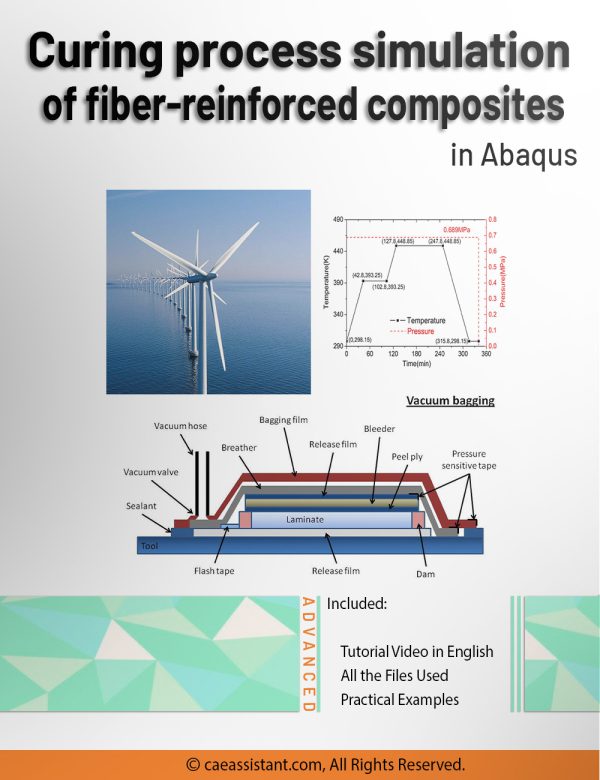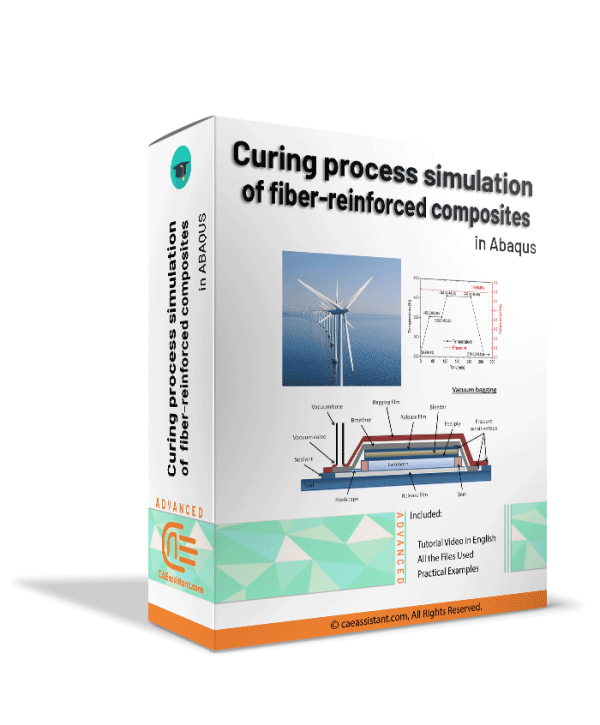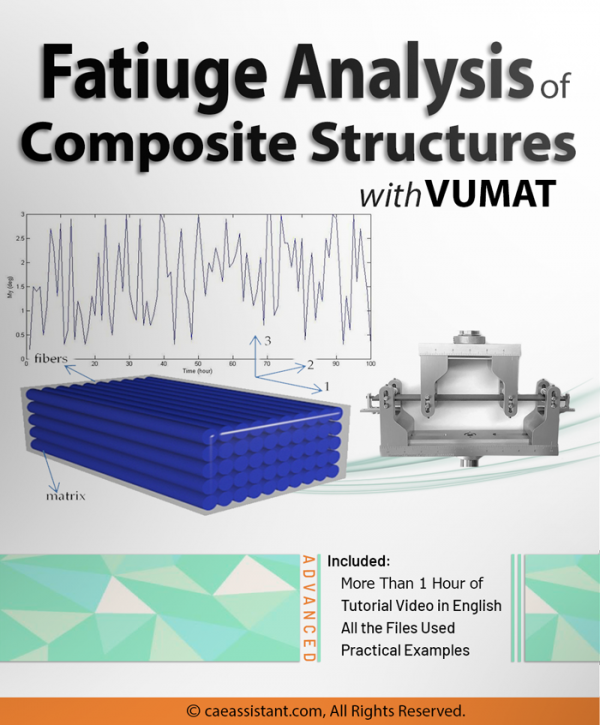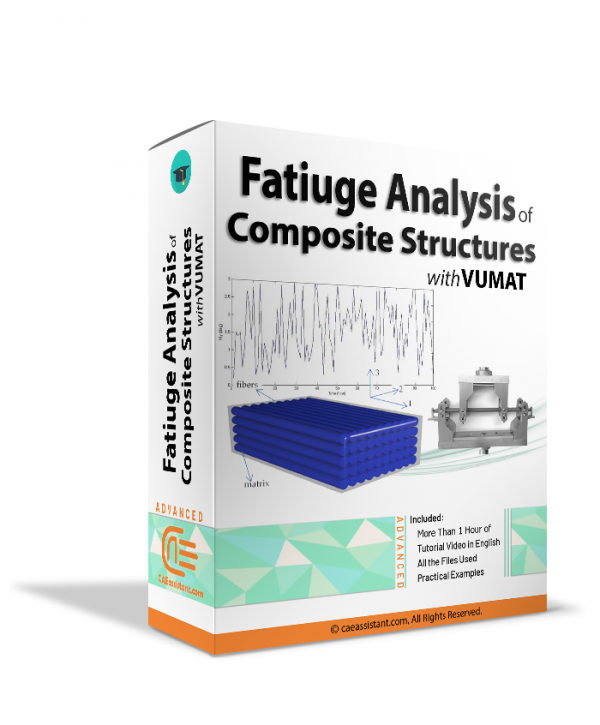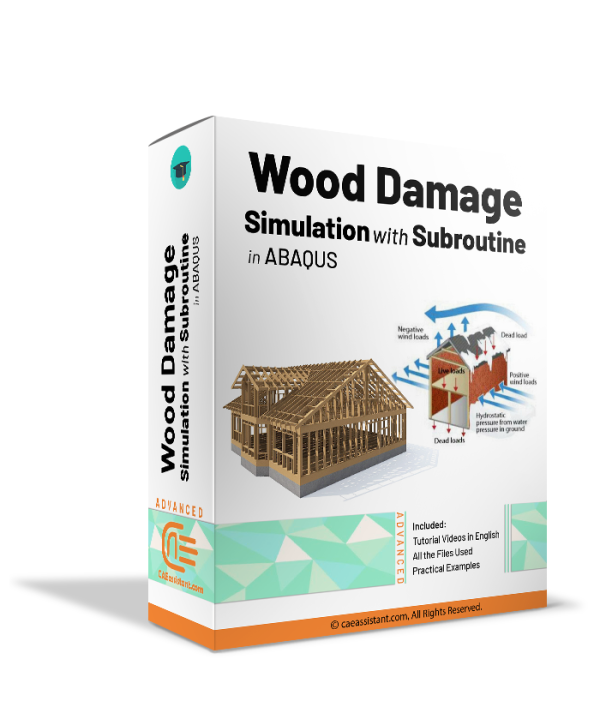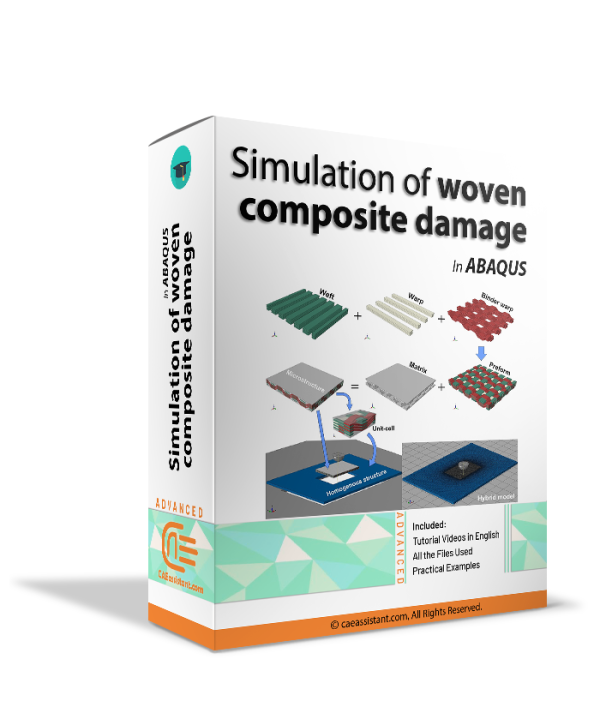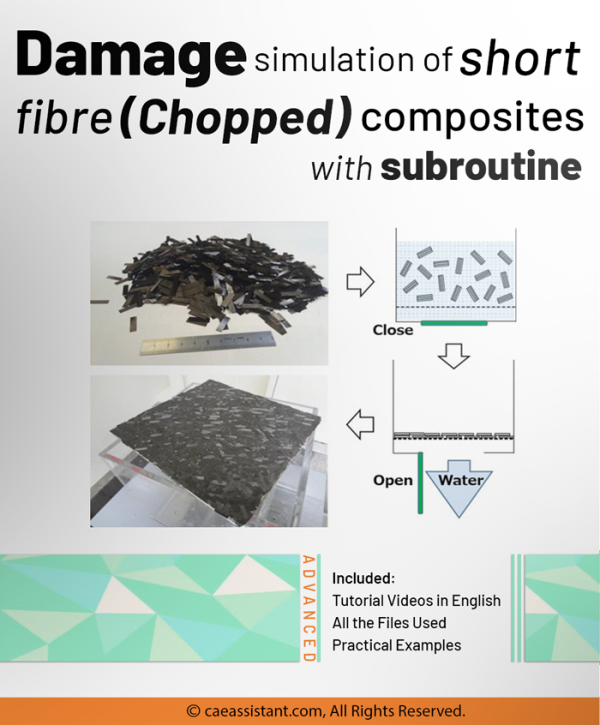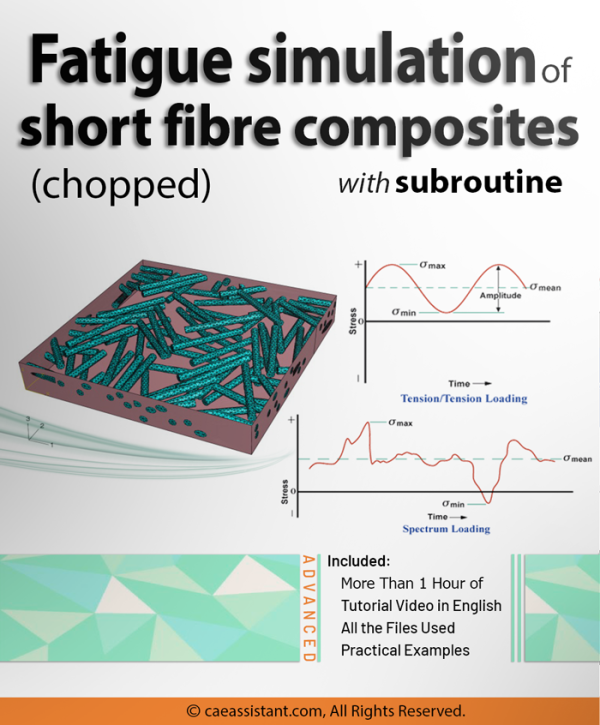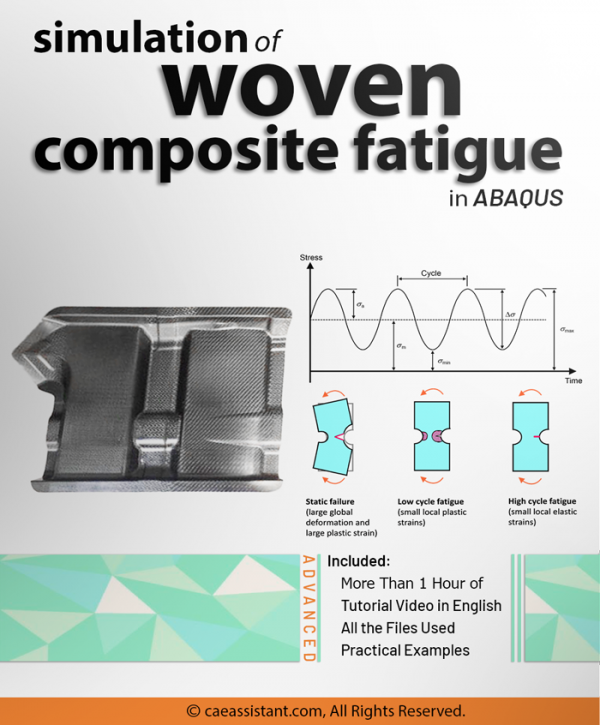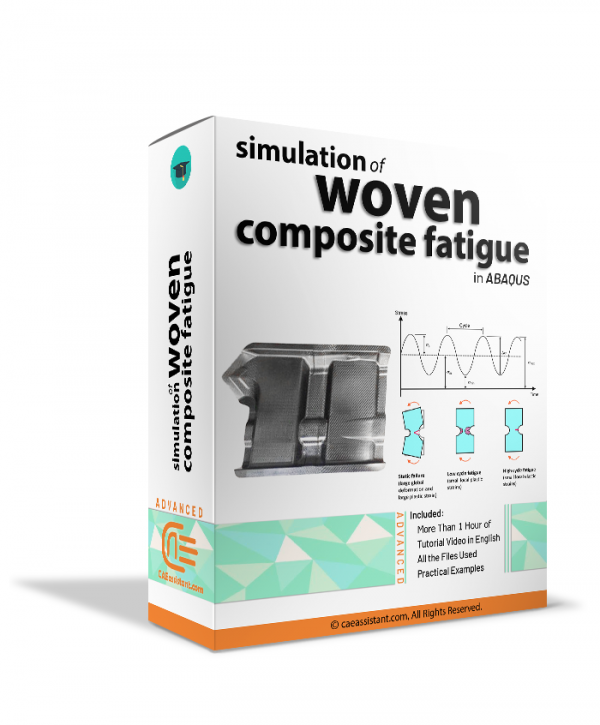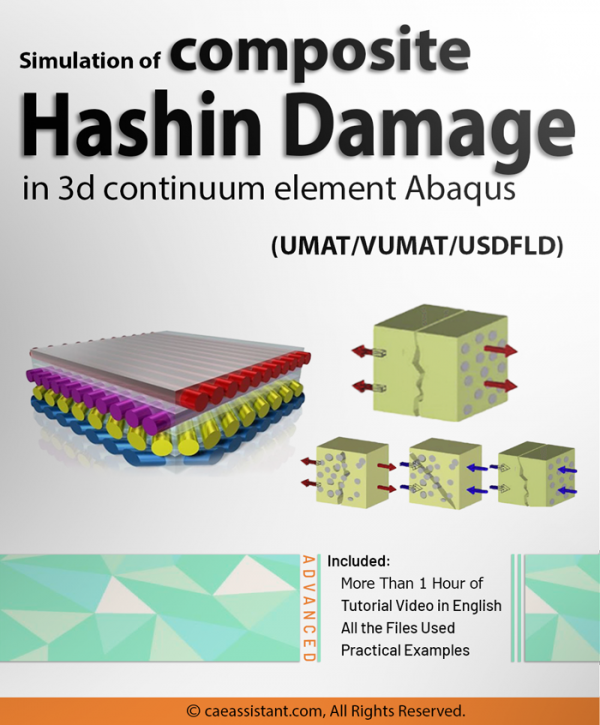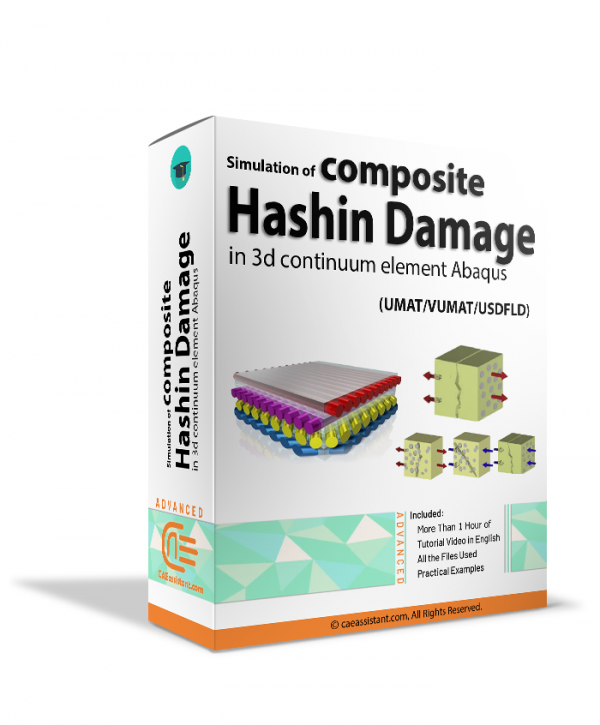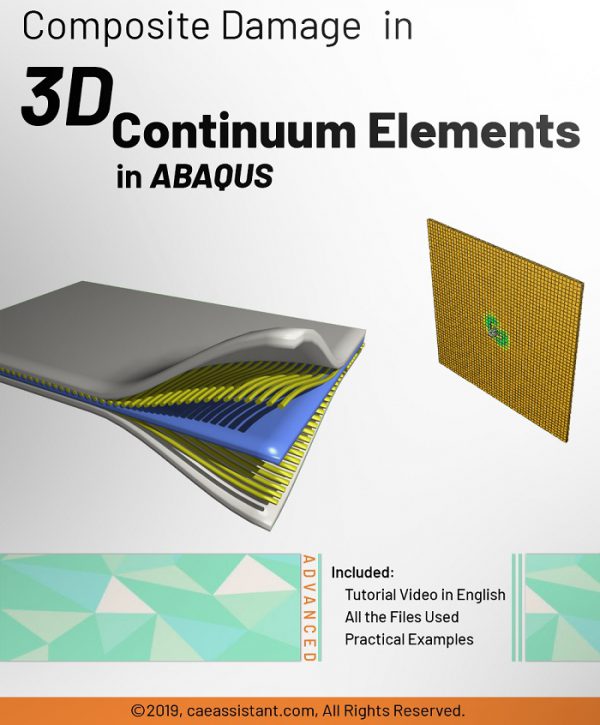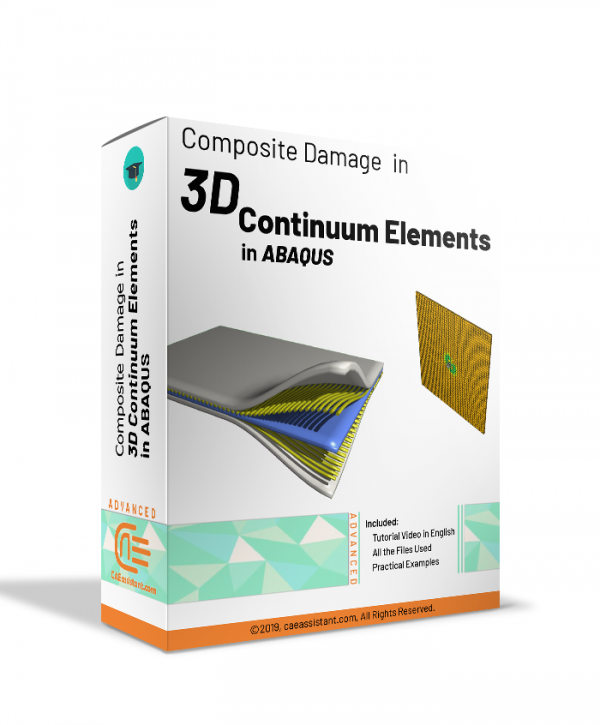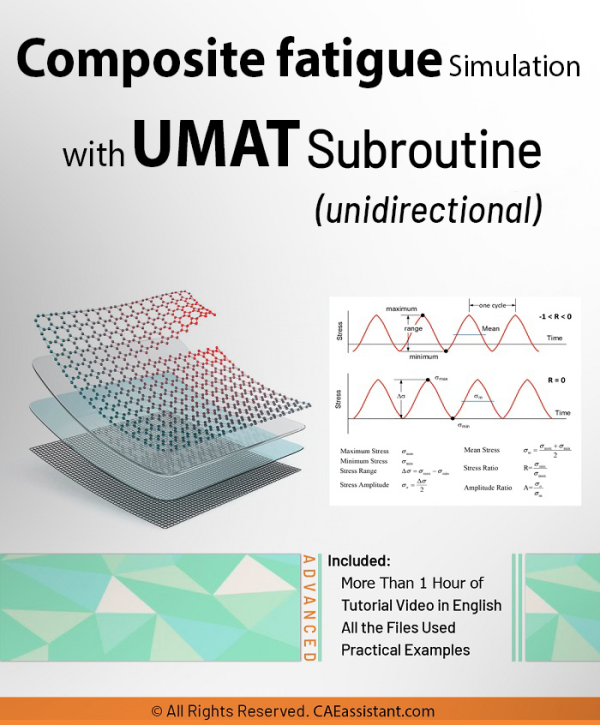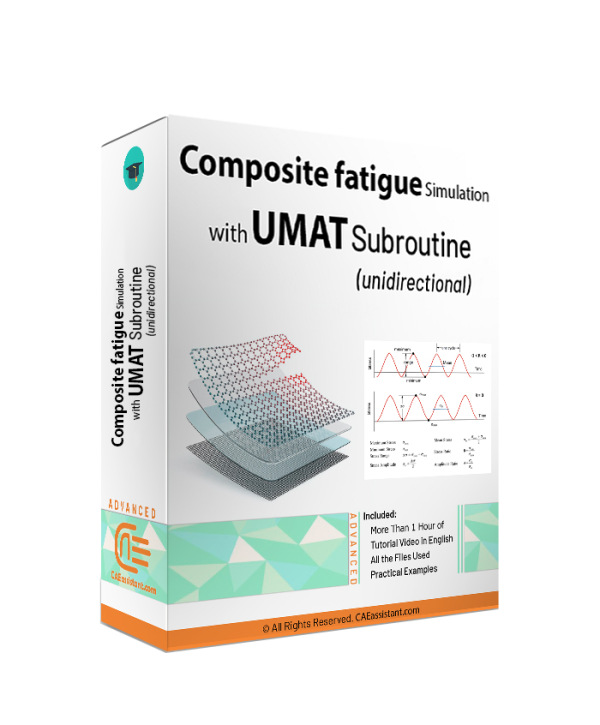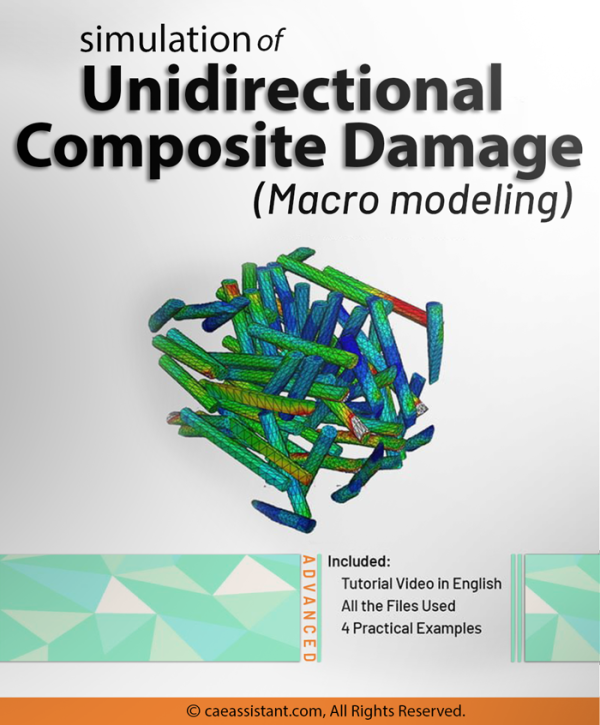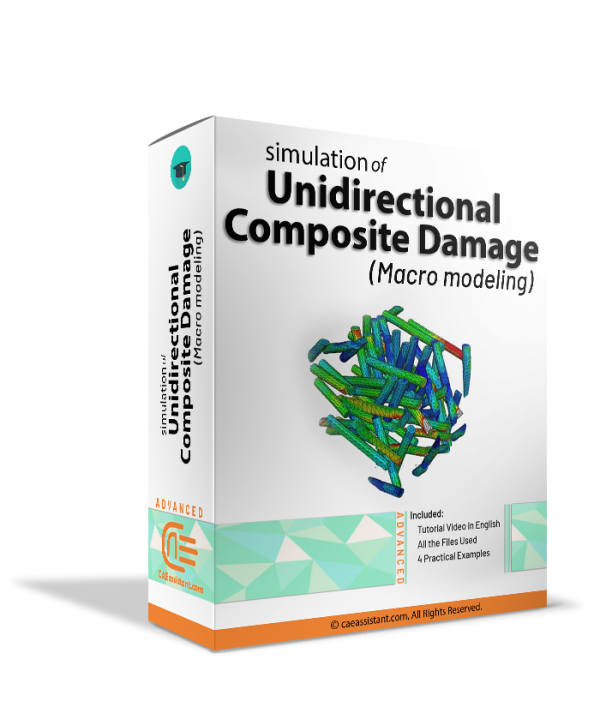Composite
Curing process simulation in Abaqus
Fiber-reinforced composites have found widespread use across various fields due to their remarkable properties. This necessitates a careful design of their manufacturing processes to attain industrial application quality. The critical factor influencing their quality is the curing process, wherein the resin transforms into a solid state under temperature cycles. However, the challenge lies in achieving optimal curing quality while maintaining production efficiency. To overcome this challenge, an effective approach involves utilizing numerical simulations to optimize temperature cycles during curing. Nonetheless, creating such a model is complex as it must consider multiple factors concurrently, including temperature release from chemical reactions, shrinkage strains, and stress resulting from temperature variations, topics covered in this package. The package begins with an introduction to fiber-reinforced composites, exploring their advantages, applications, and categorization. It guides you through the fabrication process, detailing curing techniques and associated challenges. Furthermore, the package introduces constitutive equations for simulating the curing process and the necessary Abaqus subroutines for implementation. Additionally, two practical workshops are included to offer experience in modeling the curing process with Abaqus. These workshops enable you to evaluate internal heat generation and analyze strain and stress distributions. They not only provide guidance on simulation and subroutine implementation but also are provided for verification purposes.
Composite pressure vessel analysis with Semi-Geodesic winding
Nowadays, pressure vessels are produced using various methods, one of which is filament winding. This package teaches the simulation of composite pressure vessels produced using the filament winding method. Filament winding itself has different methods, and one of the most widely used winding methods for producing composite vessels is the semi-geodesic filament winding method. In this package, first, the semi-geodesic method is described. Then, the simulation of a semi-geodesic vessel is performed using a Python script. Additionally, a UMAT subroutine is used to simulate the failure of composite materials used in the vessel.
Composite Fatigue Simulation with VUMAT Subroutine in ABAQUS
This training package consists of four chapters that help engineers and researchers in the industry to understand the fundamental concepts and necessary tools for simulating composite fatigue using VUMAT subroutine in ABAQUS. The first chapter provides an overview of the fatigue behavior of composite materials, including the factors contributing to fatigue failure. The second chapter explores the failure mechanisms of composite materials and the types of damage that can occur. The third chapter discusses the effects of fatigue on composite materials, including how it affects the material's properties and performance. Finally, the fourth chapter focuses on using the VUMAT subroutine in ABAQUS for composite fatigue analysis, including the material models and criteria used to simulate the behavior of composite materials under various loading conditions. By mastering the concepts and tools presented in this package, engineers can develop more durable and reliable composite structures that can withstand cyclic loading over extended periods of time.
Simulation of composite Puck damage in 3d continuum element in Abaqus (UMAT-USDFLD-VUMAT)
The Puck criterion is an essential damage model for composite materials, considering both fiber and matrix failures simultaneously. It provides a practical way to predict the onset of damage in composites under various loading conditions. This training package is focused on simulating composite PUCK damage in 3D continuum elements using UMAT, VUMAT, and USDFLD subroutines in Abaqus. It covers different types of failure in composites, including fiber failure, matrix cracking, delamination, and interfacial failure, as well as criteria for predicting failure modes in composites that are dependent or not dependent on each other, such as the Tsai-Wu and Tsai-Hill criterion, respectively. Additionally, the package covers composites' most commonly used damage criteria, including the Puck criterion. The package provides step-by-step guidance on simulating composite Puck damage using each of the subroutines mentioned above in Abaqus.
Wood damage simulation with Abaqus subroutine | Wood damage FEM
We concentrate on wood composite deterioration using Sandhas and Hashin failure criteria in this training manual. First, we introduce the failure criteria and associated equations in this package. The damage models' flowchart is then described. The next phase involves trying to explain two subroutines line by line. Finally, we demonstrate the use of these two subroutines in two separate workshops and talk about the outcomes.
Simulation of woven composite damage in Abaqus
Woven composites are net-shaped composite structures that are fully interconnected by their yarns. Like a piece of cloth, the yarns are weaved together as warp and weft to create a composite structure. This package includes several components. First, it begins with an introduction to woven composites. Next, it provides a detailed explanation of macro modeling and offers guidance on how to perform it. The damage criteria employed in this package is a modified version of the Hashin criteria specifically designed for woven composites. Furthermore, the package demonstrates how to model damage using the USDFLD subroutine and Hashin relations. The subroutine is thoroughly explained, line by line, and a workshop is conducted to facilitate learning and practical application. Finally, the subroutine's validity is confirmed through a verification process.
Damage simulation of short fibre composites with subroutine
Short fiber composites consist of chopped fibers and a matrix, forming a discontinuous fiber-reinforced material, with fibers typically positioned either aligned or randomly within the matrix based on the intended application. In this training package, you will learn how to model the short fiber composite (SFC) damage in Abaqus based on this article: “Damage Modeling in Random Short Glass Fiber Reinforced Composites Including Permanent Strain and Unilateral Effect”. In the lesson one, you will learn the fundamentals such as the SFCs advantages, applications, and etc. Moving on to Lesson 2, the focus shifts to modeling Short Fiber Composites in Abaqus. The lesson introduces the critical decision between Macro and Micro modeling, which this package do a macro modeling. Lesson 3 advances the learning journey by exploring damage modeling in Short Fiber Composites, particularly through Dano's model. This macroscopic approach incorporates irreversible processes and internal variables, addressing anisotropic damage, unilateral effects, and residual effects. Lesson 4 bridges theory to practical application, guiding users on how to implement Dano's model in Abaqus through the VUSDFLD subroutine. The tutorial navigates through the subroutine's flowchart, explaining each line sequentially. Complementing the lessons are two workshops. Workshop 1 features a 2D composite plate with a hole using plane stress elements, offering a detailed breakdown of material properties, boundary conditions, and simulation procedures. Workshop 2, mirroring the first, employs shell elements, showcasing variations in element types while maintaining consistency with the utilization of the VUSDFLD subroutine.
Fatigue damage simulation of short fibre composites with subroutine
Fatigue failure in materials occurs when repetitive or fluctuating stresses, below the ultimate strength and often below the yield limit, lead to sudden and unpredictable failure, making it a significant concern in engineering due to its potential for catastrophic consequences. The reinforced part of the fiber-reinforced composites can be categorized as continuous or discontinuous, with the latter referred to as short fiber-reinforced composites. In this training package, the fatigue of short (chopped) fiber composites is explained. Two fatigue damage models are presented for short fiber composites: Nouri fatigue damage model and Avanzini fatigue damage model. The Nouri’s model is applicable for composites with orthotropic behavior. But the Avanzini’s model has considered the fiber distribution in the matrix to be homogeneous and random. It has assumed the material behavior to be isotropic. Also, Nouri's model was developed for strain-controlled test, but Avanzini's model was developed for stress-controlled test. In this tutorial, we use the Avanzini’s model, which is base on this article: “Fatigue behavior and cyclic damage of peek short fiber reinforced composites”. This article has implemented the USDFLD subroutine, but we use the UMAT subroutine, which is more accurate than USDFLD since the material strength and properties reduction is smooth. A standard test specimen is used in this simulation to model such behavior. You will learn the details in the package.
Simulation of woven composite fatigue in Abaqus
The training package focuses on simulating woven composite fatigue using Abaqus software and the modified Hashin fatigue damage model based on the article titled "Life prediction of woven CFRP structure subject to static and fatigue loading ". Woven composites have high strength and stiffness-to-weight ratios, but the interlacing pattern can affect stress distribution and damage mechanisms, making fatigue analysis crucial. The package includes four lessons covering different types of composite fatigue models, material characterization, generalization of the failure model, and the implementation of the UMAT subroutine. Two workshops provide hands-on experience in implementing the UMAT subroutine on one element in cyclic tension and a complex model. Fatigue analysis predicts material behavior under cyclic loading and helps design safe and reliable structures.
Simulation of composite Hashin damage in 3d continuum element in Abaqus (UMAT-VUMAT-USDFLD)
In this training package, the 3D continuum HASHIN damage initiation model is prepared via three subroutines (USDFLD, UMAT and VUMAT).This training package teach you subroutines line-by-line. It should be noted that after damage initiation, failure occurs suddenly and in the form of a reduction in properties in the model. The HASHIN theory for this package is based on Kermanidis article titled” FINITE ELEMENT MODELING OF DAMAGE ACCUMULATION IN BOLTED COMPOSITE JOINTS UNDER INCREMENTAL TENSILE LOADING “.
3D continuum Abaqus HASHIN progressive Damage for composite materials (VUMAT Subroutine)
This tutorial teaches how to simulate damage in 3d continuum composite materials in ABAQUS. As you know, Abaqus does not have any material model for 3d composite materials. So, the user needs to write a customized subroutine to simulate damage initiation and progressive damage for composite materials in ABAQUS. In this package, one of the most practical damage initiation criteria (Hashin) is used to detect failure. It should be mentioned that this subroutine includes gradual progressive damage based on the energy method. This complex subroutine could be used for static and dynamic problems.
Composite Fatigue Simulation with UMAT Subroutine in ABAQUS (unidirectional)
The composite fatigue training package completely teaches how to simulate and analyze a fatigue composite model with the help of UMAT Subroutine in Abaqus software. In this training package, we have provided all the files needed for your training, including articles, theories, how to write subroutines, and software settings.
Simulation of Unidirectional Composite Damage in ABAQUS
This package is about Unidirectional Composite Damage tutorial and applies various theories to initiate and progress damage in composite materials based on ABAQUS capabilities for different elements. As you know, according to the modeling done by the micro or macro method, the way of defining the Abaqus composite damage completely follows the separate method in ABAQUS. This training package is customized for Abaqus composite macro modeling. There are 5 different unidirectional composite examples to help you master unidirectional composite simulations and Abaqus composite laminate damage modeling. You can see the examples in the syllabus below.
